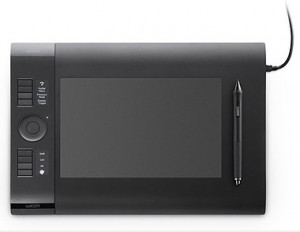When trying to break into the field of graphic design, having a solid portfolio is crucial. If you are job-hunting, your portfolio is what employers will be looking at to decide whether or not to give you an interview. If you are starting a freelance business, potential clients will be comparing portfolios to choose a designer for a project. There are several choices for what type of portfolio to build, and each has their own benefits and considerations that you may need to look at.
Website
Online portfolios are probably the most popular type today. As a graphic designer, some will even assume you have a web site. If your focus is web design, an online portfolio is the choice for you, as it serves as an example of your work.
Benefits:
- Easy to send out…it’s just a link
- Can provide a look into your personality
- Allows for an interactive presentation of your work
Considerations:
- The most time consuming to create
- You have to worry about it looking or behaving differently from computer to computer
- You need the technical knowledge to set it up
- Expensive to hire someone to develop it for you
- You will have to pay for a domain name and monthly web hosting (although both can be accomplished for a little over $100/yr)
Creating a portfolio as a PDF is becoming more and more popular. Using Acrobat, multi-page PDFs can be created from layouts created in a graphics software program (such as InDesign or Photoshop). The result is a brochure style piece that shows examples of your work along with descriptions of projects and related information.
Benefits:
- Easy to email
- Control over layout without having to worry about browser and web issues
- The PDF itself serves as an example of your layout and typography skills
- Can be printed with consistent results
- Relatively quick and free to create
Considerations:
- Relies on the user to save and open the file
- Less effective for showing web design projects
The Classic Portfolio
The classic portfolio, an actual book of various sizes with printed examples of your work, still serves a purpose in today’s “digital world.” There are several ways to present such a portfolio, from placing prints in a pre-made book with sleeves, to creating your own custom, bound book.
Advantages:
- Shows your work in its actual, final format
- Great for showing off print design
- Can be brought to a meeting and shown without a computer
Considerations:
- Must be delivered by mail or in person
- If you leave with a potential client or employer, you are left without a portfolio
In the end, the type of portfolio you choose to have will depend on your budget, available time and type of work. For web designers, an online portfolio is a no-brainer. If you don’t have the time or budget to set up a web site right now, you should at least have a PDF so you have something to email. A classic portfolio is great to bring to a meeting and show off your best print work.
As a portfolio is a key marketing piece, it should be taken seriously, and a combination of the options above might be the right choice to get you your dream job or client.
Best advice, try to have all three of the above portfolio types (cover all of your bases!). Remember, you are marketing yourself , you are the brand! Never settle for only one method of presenting you and your work!
